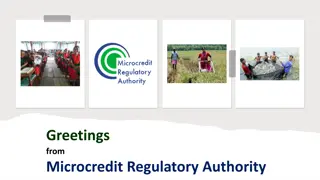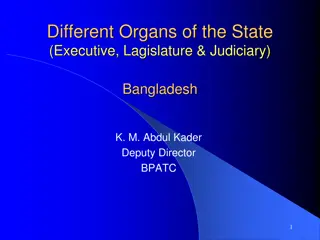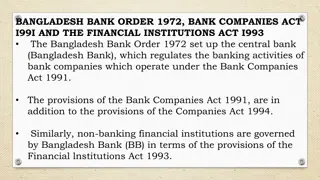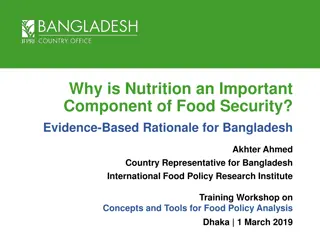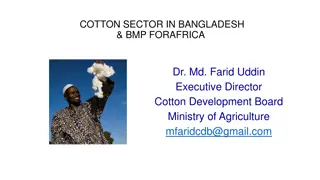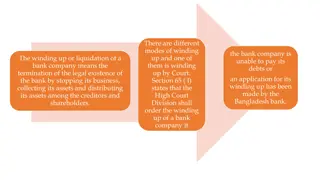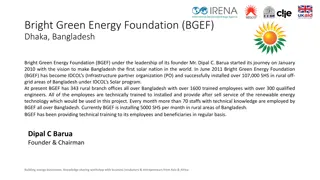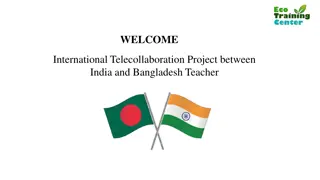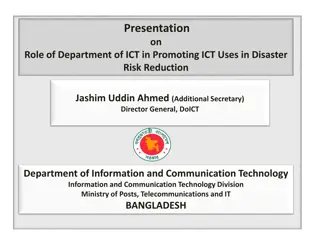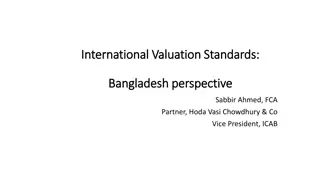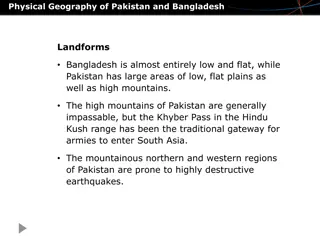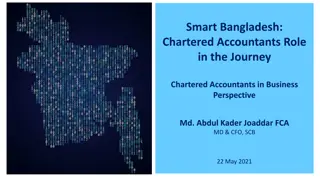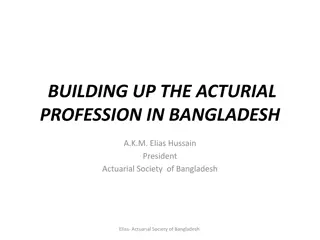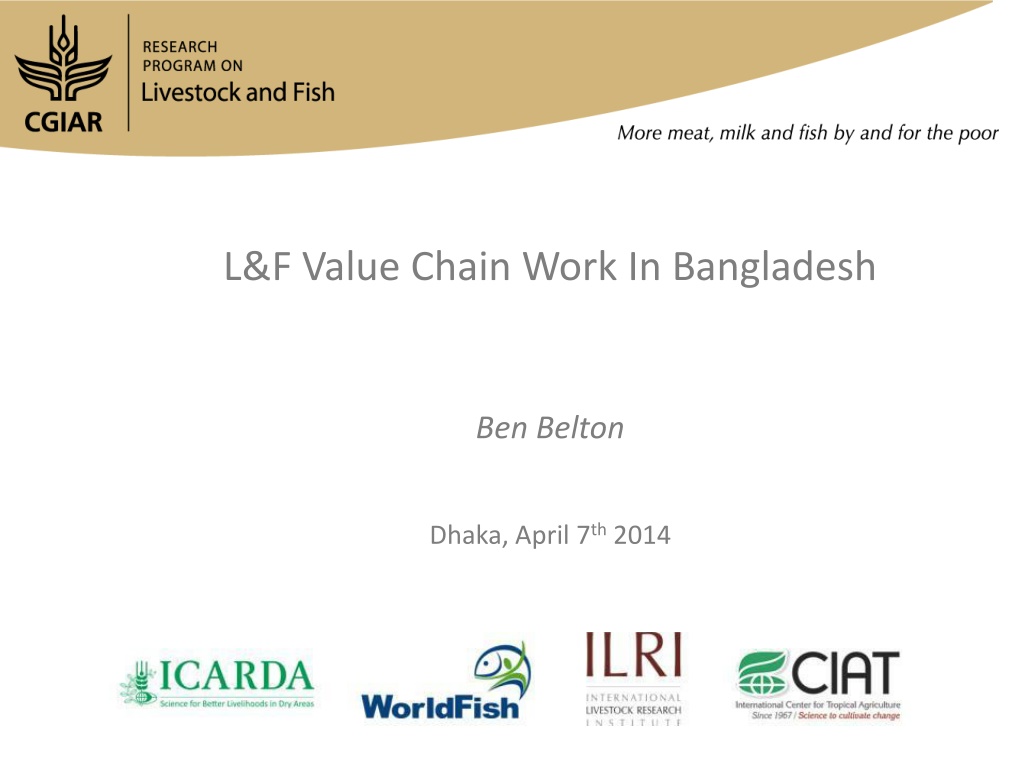
Value Chain Research in Bangladesh: Current Status and Future Directions
This article discusses the evolution and future prospects of value chain research in Bangladesh, focusing on key areas such as increasing fish availability for poor consumers, addressing barriers for women and marginalized groups, and testing interventions for scaling impact. It highlights legacy work on value chains in Bangladesh, including assessments of seed and seafood value chains, as well as interventions to enhance aquaculture feed chains. The article emphasizes the importance of evaluating the transition from capture fisheries to aquaculture in the region.
Download Presentation

Please find below an Image/Link to download the presentation.
The content on the website is provided AS IS for your information and personal use only. It may not be sold, licensed, or shared on other websites without obtaining consent from the author. Download presentation by click this link. If you encounter any issues during the download, it is possible that the publisher has removed the file from their server.
E N D
Presentation Transcript
L&F Value Chain Work In Bangladesh Ben Belton Dhaka, April 7th2014
Introduction Overarching agenda for value chain research Types of value chain research Legacy work on value chains L&F specific value chain work Possibilities for future research
Overarching agenda for value chain research Research areas How to increase availability of, and access to, fish for poor consumers Identifying barriers to participation of women and marginalized groups in value chains Identifying policy and institutional interventions to improve value chain performance Testing mechanisms for scaling value chain interventions Measuring the impact of value chain interventions
Types of value chain research Desk-based studies to identify gaps/entry points Field-based analysis of a specific value chain, or part of a value chain, to identify appropriate interventions Testing new approaches or tools for analysis and scaling Value chain related research (exploring particular aspects/impacts of activities occurring within a value chain, but without an explicit value chain focus)
Legacy work on value chains in Bangladesh Assessments of the carp seed value chain in SW Bangladesh (conducted under AIN to ground truth appropriateness of existing interventions and identify new approaches) Analysis of shrimp, prawn and tilapia value chains and assessment of potential for sea bass culture (as above) Comprehensive assessment of the structure and performance of fish feed value chains in Bangladesh: report published as Improving aquaculture feed in Bangladesh: From feed ingredients to farmer profit to safe consumption Results fed back to industry and government through outreach workshop and stakeholder inputs formed basis for a set of recommendations which was translated directly into subsequent feeds work of AIN and the development of MDQF project proposal
Legacy work around value chains in Bangladesh Evaluation of the effects of the transition from capture fisheries to aquaculture on poor consumer access to fish, based on Bangladesh Bureau of Statistics national data for 2000, 2005 & 2010. (Key findings: Consumption of farmed fish by the poor increased at a faster rate than consumption by non-poor) Published in World Development as Is aquaculture pro-poor? Empirical evidence of impacts on fish consumption in Bangladesh Comparative study of the impacts of different forms of aquaculture development on the local rural economy in 6 villages in Bangladesh. (Key findings: Clusters of commercial smallholder farms had bigger positive impact on local rural economy than homestead ponds or larger scale farms; Much higher levels of direct participation by the poor in some types of commercial aquaculture than anticipated; Aquaculture tends to create more jobs than agriculture) Published as Aquaculture, employment, poverty, food security and well-being in Bangladesh: a comparative study
L&F specific value chain work Situational analysis: Bangladesh small and medium-scale aquaculture value chain development: Past trends, current status and likely future direction (Desk-based, introductory piece supporting start up the program in Bangladesh) Literature review of selected aquaculture value chains in Southern Bangladesh (Many studies already conducted compiled results, identified weaknesses and gaps as preparation for own value chain analysis activities)
L&F specific value chain work Value chain assessment & gender & social analysis of the fish value chain in SW Bangladesh Objective: Assess the current status of the value chain for tilapia, silver carp, rohu and mola across production systems and scales and identify constraints and opportunities, whilst testing tools for integration Gender Transformative Approaches into value chain analysis Sub-objectives: Characterize the fish production systems and value chain in southwest Bangladesh Identify constraints, barriers to participation by poor men and women and identify opportunities to improve Test and revise gender transformative tools for VC analysis
Value chain assessment and gender & social analysis in SW Bangladesh Locations: 6 communities in Khulna, Bagerhat and Barisal Criteria: Level of salinity (medium, low and zero), farming system (pond, gher, homestead) Methodology: Facilitation of structured focus group discussions in Bengali; recorded, transcribed and translated Topics covered: Livelihoods and aquaculture systems analysis; Seasonal calendar; Value chain mapping; Household decision making; Activities and Time Use; Access to, and Control over, Resources; Relationship ranking; Gender Norms; Constraints and solutions Results: Coding and analysis using Nvivo software currently underway, results due by July
Planned activities Recommendation on priorities for interventions in the VCs and for priorities for technology flagships Identification of institutional, social, behavioral, economic barriers and incentives to adoption of best bets Refined tools to support future assessments Implement research strategy to identify emerging evidence of gender transformative change and links to value chain performance and transformation
Possibilities for future research Dried fish value chains? Both by and for the poor Important throughout Asia and Africa but overlooked, poorly understood Dried products disproportionately important to low income consumers Value chains employ large numbers of (often very poor) women, children and men Working conditions (in Bangladesh) often highly exploitative Major food safety and occupational health issues (heavy use of pesticides) Not currently part of L&F remit as focus on farm based production, potential for collaboration with A4NH
CGIAR Research Program on Livestock and Fish livestockfish.cgiar.org CGIAR is a global partnership that unites organizations engaged in research for a food secure future. The CGIAR Research Program on Livestock and Fish aims to increase the productivity of small-scale livestock and fish systems in sustainable ways, making meat, milk and fish more available and affordable across the developing world.

